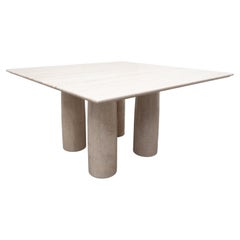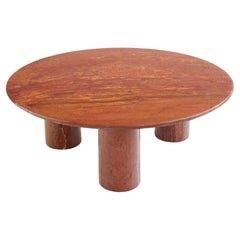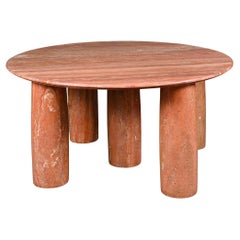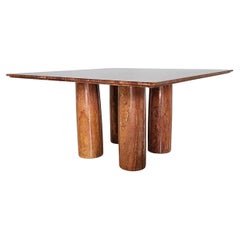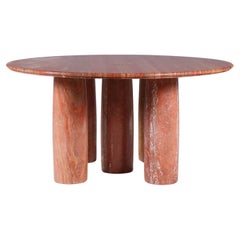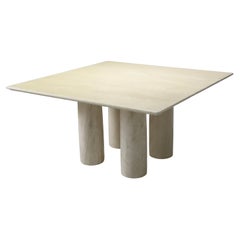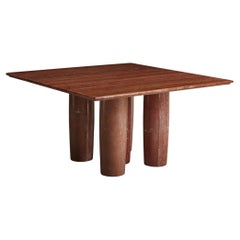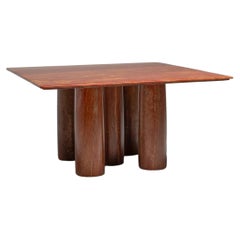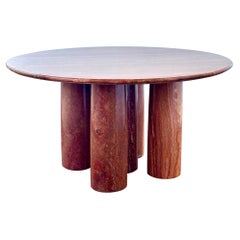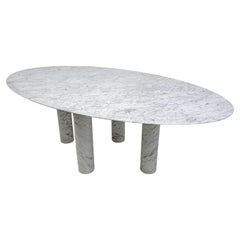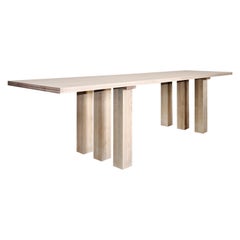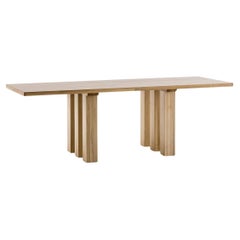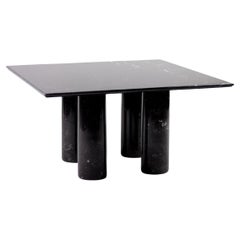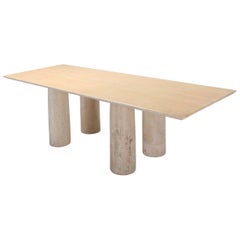Il Colonnato
Vintage 1970s Italian Mid-Century Modern Dining Room Tables
Travertine
Vintage 1970s Italian Coffee and Cocktail Tables
Travertine
20th Century Italian Mid-Century Modern Dining Room Tables
Marble
Vintage 1970s Italian Mid-Century Modern Dining Room Tables
Marble
Mid-20th Century Italian Mid-Century Modern Dining Room Tables
Travertine, Marble
Vintage 1970s Italian Mid-Century Modern Dining Room Tables
Travertine
Vintage 1970s Italian Dining Room Tables
Travertine
Vintage 1970s Italian Mid-Century Modern Dining Room Tables
Travertine
Vintage 1970s Italian Mid-Century Modern Dining Room Tables
Travertine
Vintage 1970s Italian Post-Modern Dining Room Tables
Carrara Marble
Vintage 1970s Italian Mid-Century Modern Dining Room Tables
Wood, Hardwood, Ash
2010s Italian Mid-Century Modern Tables
Wood
Recent Sales
Vintage 1970s Italian Mid-Century Modern Dining Room Tables
Marble
Late 20th Century Italian Post-Modern Dining Room Tables
Travertine
Late 20th Century Italian Mid-Century Modern Dining Room Tables
Travertine
Vintage 1970s Coffee and Cocktail Tables
Travertine
Mid-20th Century Italian Mid-Century Modern Dining Room Tables
Marble
Mid-20th Century Italian Mid-Century Modern Dining Room Tables
Marble
Vintage 1970s Italian Mid-Century Modern Dining Room Tables
Travertine
Vintage 1970s Italian Mid-Century Modern Dining Room Tables
Marble
Vintage 1970s Italian Mid-Century Modern Dining Room Tables
Travertine
Late 20th Century Italian Mid-Century Modern Dining Room Tables
Travertine
Vintage 1970s Italian Mid-Century Modern Center Tables
Travertine
Vintage 1970s Italian Mid-Century Modern Dining Room Tables
Marble
21st Century and Contemporary Italian Mid-Century Modern Dining Room Tables
Travertine, Marble
Vintage 1970s Italian Post-Modern Dining Room Tables
Stone, Marble, Carrara Marble
Vintage 1970s Italian Post-Modern Coffee and Cocktail Tables
Marble
Vintage 1970s Italian Mid-Century Modern Dining Room Tables
Travertine
Vintage 1970s Italian Mid-Century Modern Dining Room Tables
Travertine
Vintage 1970s Italian Dining Room Chairs
Leather
Vintage 1960s Italian Modern Sofas
Leather
Vintage 1970s Italian Dining Room Chairs
Leather
Vintage 1970s Italian Dining Room Chairs
Leather
Vintage 1980s Italian Mid-Century Modern Dining Room Tables
Carrara Marble
Vintage 1970s Italian Mid-Century Modern Dining Room Tables
Metal
Mid-20th Century French Mid-Century Modern Lounge Chairs
Leather
Vintage 1970s Italian Post-Modern Dining Room Tables
Marble
Vintage 1970s Italian Mid-Century Modern Dining Room Tables
Travertine
Vintage 1970s Italian Modern Dining Room Tables
Marble
Vintage 1970s European Mid-Century Modern Coffee and Cocktail Tables
Carrara Marble
Vintage 1970s Italian Mid-Century Modern Dining Room Tables
Marble
Vintage 1970s Italian Mid-Century Modern Dining Room Tables
Travertine, Marble
Vintage 1970s Italian Mid-Century Modern Dining Room Tables
Travertine
Vintage 1970s Italian Mid-Century Modern Dining Room Tables
Travertine, Marble
Vintage 1970s Italian Mid-Century Modern Dining Room Tables
Marble, Carrara Marble
Vintage 1970s Italian Modern Dining Room Tables
Marble, Travertine
Vintage 1970s Italian Mid-Century Modern Dining Room Tables
Marble
Vintage 1970s Italian Mid-Century Modern Coffee and Cocktail Tables
Carrara Marble
Vintage 1970s Italian Mid-Century Modern Dining Room Tables
Travertine
Vintage 1970s Italian Mid-Century Modern Dining Room Tables
Marble
Vintage 1970s Italian Post-Modern Tables
Travertine
Vintage 1980s Italian Post-Modern Dining Room Tables
Marble
Vintage 1970s Italian Mid-Century Modern Dining Room Tables
Wood, Hardwood, Walnut
Illustrated: Gramigna. "Repertorio del Desi...
Vintage 1970s Italian Dining Room Tables
Vintage 1970s Italian Tables
Vintage 1970s Italian Dining Room Tables
Marble
Vintage 1970s Dining Room Tables
Marble
Vintage 1970s Italian Mid-Century Modern Dining Room Tables
Travertine
People Also Browsed
Vintage 1970s European Mid-Century Modern Dining Room Chairs
Pine
21st Century and Contemporary Swedish Mid-Century Modern Table Lamps
Textile
21st Century and Contemporary Italian Modern Screens and Room Dividers
Paper
2010s South African Minimalist Pedestals
Hardwood
2010s British Scandinavian Modern Tables
Mohair, Oak
2010s South African Minimalist Night Stands
Wood
Vintage 1970s European Mid-Century Modern Lounge Chairs
Leather
Vintage 1970s German Mid-Century Modern Wall Lights and Sconces
Bamboo
Late 20th Century Italian Mid-Century Modern Sofas
Leather
Vintage 1970s Italian Post-Modern Bedroom Sets
Leather
Vintage 1970s Sofas
Chenille
Vintage 1970s Italian Coffee and Cocktail Tables
Walnut
Vintage 1970s American Modern Lounge Chairs
Fabric, Fiberglass
2010s American Modern Dining Room Tables
Wood
Early 2000s Dutch Minimalist Dining Room Tables
Oak, Teak, Walnut
Vintage 1970s European Mid-Century Modern Table Lamps
Chrome
Il Colonnato For Sale on 1stDibs
How Much is a Il Colonnato?
Mario Bellini for sale on 1stDibs
Milan-born architect and designer Mario Bellini just may be the closest thing to a modern-day Renaissance man: His creative output spans genres, from electronics to furniture to architecture to cars, comprising iconic designs in each. Vintage Mario Bellini sofas, dining chairs and other seating pieces are widely coveted, and the designer has been the recipient of multiple prestigious Compasso d’Oro awards. More than 20 of his works are in the permanent collection of the Museum of Modern Art.
Born in 1935, Bellini studied architecture at the Polytechnic University of Milan before founding his own firm in his native city in the early 1960s. He soon branched out beyond architecture, however, first for the tech manufacturer Olivetti, where he served as chief industrial design consultant from 1963 to 1991. During that time, Bellini oversaw the design of some of Olivetti’s most popular typewriters.
His penchant for electronic design didn’t stop there: Bellini also designed cameras for Fuji, televisions for Brionvega and a slew of audio devices for Yamaha, then served as design consultant for Renault and devised the interior of the 1980 Lancia Trevi for Fiat. Meanwhile, his architecture work spans continents, including such modern gems as the Museum of Islamic Arts at the Louvre, the National Gallery of Victoria extension in Melbourne, the Dubai Creek Complex and the Milan Convention Centre in his hometown.
And then there’s the furniture: Over the last 70 years, Bellini has designed office furniture for Vitra; lamps for Artemide, Erco and FLOS; porcelain for Rosenthal and long-admired sofas and other seating for Kartell, Natuzzi, B&B Italia, Cassina and more.
His oft-imitated 1977 Cab chair for Cassina, comprising 16 individual pieces of saddle leather that create a “skin” over a minimal metal frame, remains one of the manufacturer’s best sellers today. His pudgy-legged, round tables for Cassina foreshadow Faye Toogood’s widely loved Roly Poly line. His postmodern Summa armchairs for Kartell, as well as his elegant Chiara floor lamp, still lure collectors on vintage furniture websites.
Bellini’s most famous contribution to furniture design, though, may be his 1970 Camaleonda sofa for B&B Italia (then C&B Italia). An entrant to the 1972 MoMA show “Italy: The New Domestic Landscape,” the seat takes its name from the Italian words for chameleon and wave. Its bulbous, modular form makes it infinitely flexible. The sofa was a runaway hit at the show and, once discontinued, remained so popular among vintage dealers that B&B Italia reissued it in 2020 with all recycled materials and interchangeable seat covers. “Of all the objects I have designed, Camaleonda is perhaps the best in terms of its sense of freedom,” Bellini said.
Browse an expansive collection of vintage Mario Bellini furniture — including dining tables, armchairs, mid-century sofas and more — today on 1stDibs.
Finding the Right Tables for You
The right vintage, new or antique tables can help make any space in your home stand out.
Over the years, the variety of tables available to us, as well as our specific needs for said tables, has broadened. Today, with all manner of these must-have furnishings differing in shape, material and style, any dining room table can shine just as brightly as the guests who gather around it.
Remember, when shopping for a dining table, it must fit your dining area, and you need to account for space around the table too — think outside the box, as an oval dining table may work for tighter spaces. Alternatively, if you’ve got the room, a Regency-style dining table can elevate any formal occasion at mealtime.
Innovative furniture makers and designers have also redefined what a table can be. Whether it’s an unconventional Ping-Pong table, a brass side table to display your treasured collectibles or a Louis Vuitton steamer trunk to add an air of nostalgia to your loft, your table can say a lot about you.
The visionary work of French designer Xavier Lavergne, for example, includes tables that draw on the forms of celestial bodies as often as they do aquatic creatures or fossils. Elsewhere, Italian architect Gae Aulenti, who looked to Roman architecture in crafting her stately Jumbo coffee table, created clever glass-topped mobile coffee tables that move on bicycle tires or sculpted wood wheels for Fontana Arte.
Coffee and cocktail tables can serve as a room’s centerpiece with attention-grabbing details and colors. Glass varieties will keep your hardwood flooring and dazzling area rugs on display, while a marble or stone coffee table in a modern interior can showcase your prized art books and decorative objects. A unique vintage desk or writing table can bring sophistication and even a bit of spice to your work life.
No matter your desired form or function, a quality table for your living space is a sound investment. On 1stDibs, browse a collection of vintage, new and antique bedside tables, mid-century end tables and more .
